Dive Thailand Aboard the Aggressor Liveaboard
Six good reasons to dive Thailand before you die: Soft corals that go on for acres; anemones — and their resident fishes — carpeting nearly everything; granite formations that seem sculpted by a mighty hand; rivers of yellow snapper; obligingly photogenic eels; oh, and those picture-postcard beaches dotting the horizon.
Two very good reasons to book Thailand Aggressor with a Jim Church School of Underwater Photography Expedition: A couple of exotics unlike anything you’ve encountered, both named Mike.
Mikes Mesgleski and Haber are co-owners of the Jim Church School — “I prefer co-conspirator,” Mesgleski confides. Along with their mentor, the late Jim Church, the two have been offering photo instruction aboard Aggressor Fleet boats since 1988. Combining the patience of saints and the timing of Borscht Belt comedians, the Mike-and-Mike Show constitutes as big a draw for many Aggressor divers as almost any underwater entertainment.
“When they get together they feed off each other,” says diver Mike Lamb, 51, of Douglasville, Georgia, who was making his 50th Aggressor trip since 1989, most of them Jim Church School cruises. “I still learn something from them every time.”
And what exactly does Thailand offer the underwater shooter? Diving that combines opportunities for macro and wide-angle, reefscape and muck, without ever moving the boat.
The five islands of the Koh Haa group, south of the Phi Phi Islands, are a good example. Sheer, striated limestone walls balloon out from impossibly tiny bases, sloping inward to verdant tops, at low tide forming the classic “Thai island” look beloved of photographers and filmmakers. Below you’ll find granite structures, caverns and coral reefs, with sandy areas of excellent muck diving sprinkled between, all surrounded by a mind-boggling spread of soft corals.
At Koh Haa’s Lavender Fields, soft coral proliferates in hues from purple to lilac to white, mingled as far as the eye can see. Just above the fields lies a chimney that conceals a surprise cavern, thick with sweepers that didn’t spook. On the other side of the small island — many koh are easily circumnavigated on a dive or two — we flew high over terraces of plate corals; dropping down closer, they were bursting with fish, nudis and eels, eels and more eels. In between was a gorgeous mini wall covered in yellow, orange and lavender cup corals.
At Koh Haa Rock, crazy-patterned harlequin shrimp were devouring an unlucky sea star, the beginning of another super-fishy dive over an impressive granite landscape. On the sandy plains of nearby Koh Haa Lagoon, four or five hilariously feisty sea moths took turns charging me, clearly trying to chase me from the neighborhood. (Aggressive nesting titan triggerfish more persuasively tried the same at numerous sites.) Cuttlefish, sea kraits, shy peacock mantis shrimp, scorpionfish, huge schools of bait fish, a slender leaf cockatoo, blue-spotted stingray and the ever-present eels — all easy to spot in 60 to 80 feet of viz — rounded out a parade that’s typical of the region. That essentially Thai experience continues onboard.
“You get a taste of the country on the boat — the food, the culture, meeting Thai people,” says Thailand Aggressor’s director, Lowel ORourke, 40. A bear of a man, ORourke is clearly looked up to by staff and crew — quite literally, to the merriment of guests and the mostly diminutive Thais.
Safe diving is observed, but if you wanna be in the water, you will be, all day and into the evening. Need a break? Two hammocks, a hot tub and numerous chaise lounges await you on the top-most deck, with views of tropical islands all around. Meals are sumptuous, lovingly presented, and more or less constant, if you count interval snacks that ranged from fresh-baked mocha, almond or shortbread cookies to Thai fish dumplings to pommello, quesadillas and ice cream bars. (When the still-warm churros rolled in cinnamon sugar showed up one gray morning, I knew I had found my boat.) Menus cater to Western guests — vegetarian? no prob — but always include Thai specialties that were among the best offerings.
“The consistency of the operation is remarkable,” says diver Tom Silverstein, 50, of Northbrook, Illinois, who was making his sixth Aggressor trip with the Jim Church School. “Running a four-star hotel would be considerably less effort” than what Aggressor and Dancer Fleet pulls off on every cruise, at 16 locations worldwide. Most importantly to Silverstein, “everybody has a passion for the diving — the captains, stewards, divemasters, they’re all excited about diving and photography.”
“If you’re a diver at heart, Aggressor is the way to do it,” says ORourke.
THAILAND DIVE GUIDE
Jim Church School accepts only certified divers, and there’s a reason for that, especially on the school’s Expedition charters, which are offered in more challenging locations. Although Thailand Aggressor is a super-comfortable boat — think of a beach house you love but don’t mind getting wet and sandy — this isn’t princess diving, and it isn’t baby diving. Dives aboard Thailand Aggressor are not technically guided, although staff is in the water on every dive, if only because they love it as much as you do. But you are neither expected nor required to stay with them.
If you prefer to dive with somebody from the ’hood, the dive staff will eagerly show you the best sites to make the picture you are trying to bag. “They know the sites, they know where everything is, they know the last time they saw a particular shrimp — that gets high points from me,” says diver Pierrette Wagner, 49, of Greenwich, Connecticut, who was making her 10th Aggressor trip since 2002.
On a Jim Church Aggressor cruise, the schedule is tailored to guests. “As long as it’s safe to do, they’ll do it,” Mesgleski says of itinerary changes. “Adding dives? No prob. Staying a day at one site? Not a sweat.”
Expedition diving is "more rigorous than in the Caribbean,” where the school offers more classroom-style instruction, Mesgleski says. Expeditions include more in-water and one-on-one time, and “more exotic locations for those who dive with us over and over.”
That guidance comes in handy in a place like Thailand, where the number of prize-winning shots you could make is off the charts. (I counted 70 different species for my logbook, 15 of them new to me.)
At two spectacular open-water pinnacles, Hin Daeng and Hin Muang, seamounts support canyons and plateaus that create picturesque niches for eels, shrimp and other critters, while good-sized grouper and schooling barracuda hang just out of reach. If diving massive Hin Muang is like soaring over the Rockies, Hin Daeng is like flying up the Grand Canyon, complete with foaming whitewater breaking at the top instead of the bottom. On a night dive at Hin Daeng, free-swimming eels turn the slopes into a living, rippling mass.
Trippy, but for unforgettable there’s Stonehenge, off Koh Lipe, near the Malaysian border, one of the prettiest dives anywhere. Looking much like a tumble-down version of its namesake — if that landmark were covered in purple soft corals of every hue — the breathtaking site seems designed for photographers, who quickly honed in on seahorses, nudis and anemonefish — that is until the current came up and the viz went down, suddenly and substantially.
The next day we returned, and so did the sun: no current, super fishy, with schools of snapper, barracuda, jacks and batfish all around. A bait “ribbon” spooled all the way around the surface horizon, all shining in the sun.
The photographers? Most went right back to the subjects they’d been working on the day before, with Mike Mesgleski moving between them, offering encouragement and a little help when needed.
The Mikes “can make any week on any Aggressor boat an enjoyable holiday that I can learn from in terms of photos,” says Lamb. “Wherever they go, I would follow.”
FIVE REASONS TO DIVE THAILAND AGGRESSOR
Consistency. When you choose Aggressor and Dancer Fleet, you know what you’re getting: a top-notch, safety-first, dive-centric experience. Thailand Aggressor, while a newish itinerary for the fleet, fits right into this portfolio.
Local knowledge, local flavors. The dive staff is Thai, as is the crew, and delighted to share their knowledge of the region with you, above and below, including teaching you a few words of Thai. The Thai dishes included as options at nearly every meal are to die for, particularly the light, fresh soups.
Jim Church School of Underwater Photography. You’ve come a long way for this; why not make it a Jim Church Expedition and ensure that you’ll take home images you are proud of?
Safety. All the benefits of exotic dive travel on a vessel you can be sure is maintained to U.S. Coast Guard standards.
Joining a club for life. Don’t be surprised if your fellow Aggressor travelers are among your greatest delights — something you can’t say of every group tour with strangers. You’ll leave hoping — or planning — to dive again with friends you make here.
NEED TO KNOW
When to Go
Thailand Aggressor offers multiple itineraries: May to October, the boat is in the South Andaman Sea, including the Phi Phi Islands, Koh Haa and the Tarutao National Park near the Malaysia border; November to April, the boat alternates between the southern route and North Andaman, including the Similan and Surin islands. (Starting in November 2014, the schedule will include itineraries to Myanmar — formerly Burma — known for pristine, untouched dive sites.)
Dive Conditions
Water temps range from 79 to 84 degrees F. A 3 mm wetsuit is sufficient (up to five dives a day are the norm; bring layers if you get chilled). Currents are generally mild to nonexistent, but conditions are changeable in the monsoon months (May to October). An SMB is required (the boat can loan); other surface-signaling devices, a muck stick and gloves are a plus.
Operator
Thailand Aggressor (aggressor.com) is a 115-foot steel-hull vessel that carries up to 18 passengers in nine staterooms, plus nine staff and crew. The ship has a spacious, comfortable dive deck with a large dedicated camera area with multiple power outlets; diving is from the back of the vessel as well as from two rigid inflatables. Contact: [email protected].
Price Tag
A six-day cruise aboard Thailand Aggressor starts at $2,580 (per person, double occupancy); nitrox and a $90 park fee are not included. (Bonus: Aggressor Fleet’s in-house travel agency can arrange land tours to include a few days in Bangkok, which is well worth a visit.
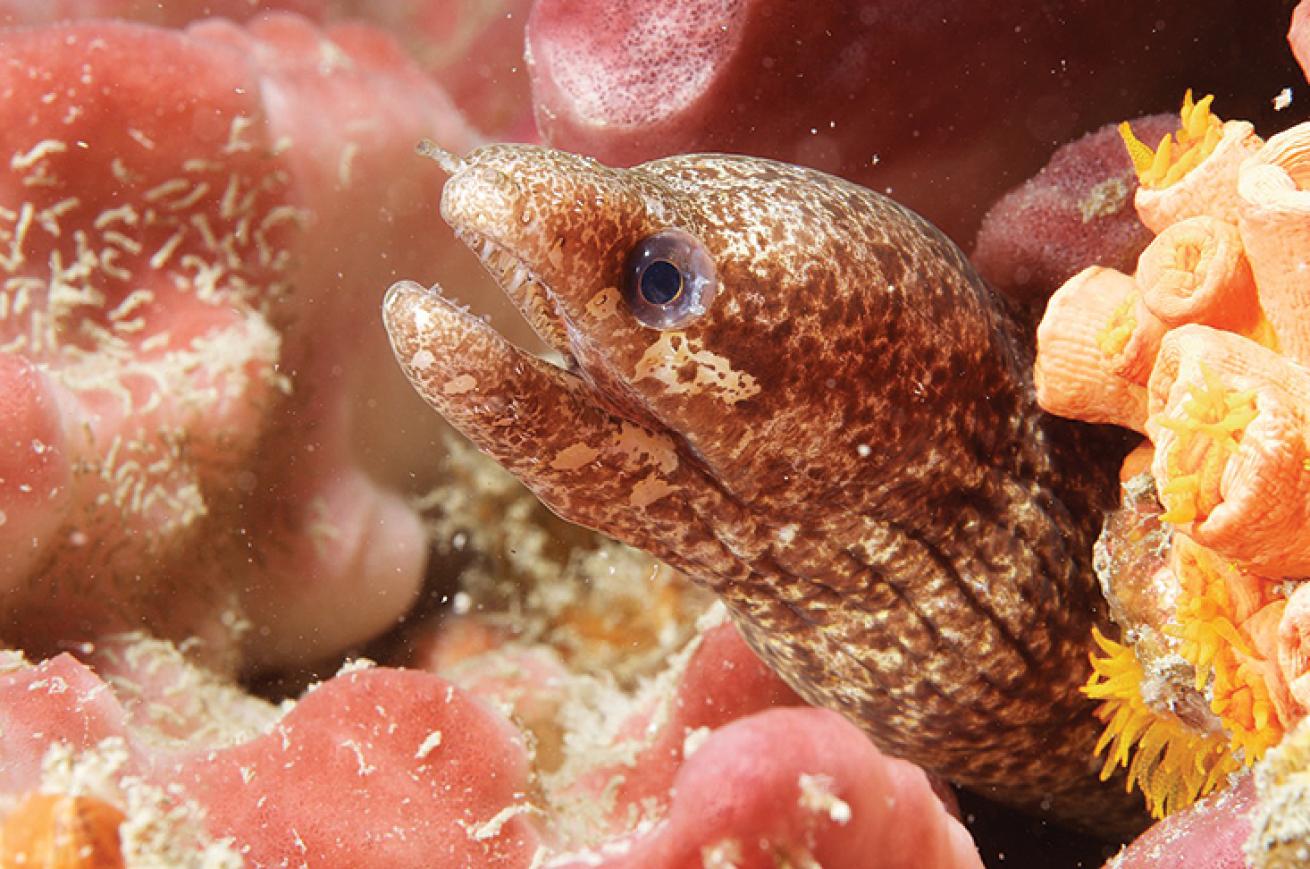
Courtesy Mike MesgleskiCurious eels can be found everywhere while diving from Thailand Aggressor. They are not as ill-tempered as they often appear.
Six good reasons to dive Thailand before you die: Soft corals that go on for acres; anemones — and their resident fishes — carpeting nearly everything; granite formations that seem sculpted by a mighty hand; rivers of yellow snapper; obligingly photogenic eels; oh, and those picture-postcard beaches dotting the horizon.
Two very good reasons to book Thailand Aggressor with a Jim Church School of Underwater Photography Expedition: A couple of exotics unlike anything you’ve encountered, both named Mike.
Mikes Mesgleski and Haber are co-owners of the Jim Church School — “I prefer co-conspirator,” Mesgleski confides. Along with their mentor, the late Jim Church, the two have been offering photo instruction aboard Aggressor Fleet boats since 1988. Combining the patience of saints and the timing of Borscht Belt comedians, the Mike-and-Mike Show constitutes as big a draw for many Aggressor divers as almost any underwater entertainment.
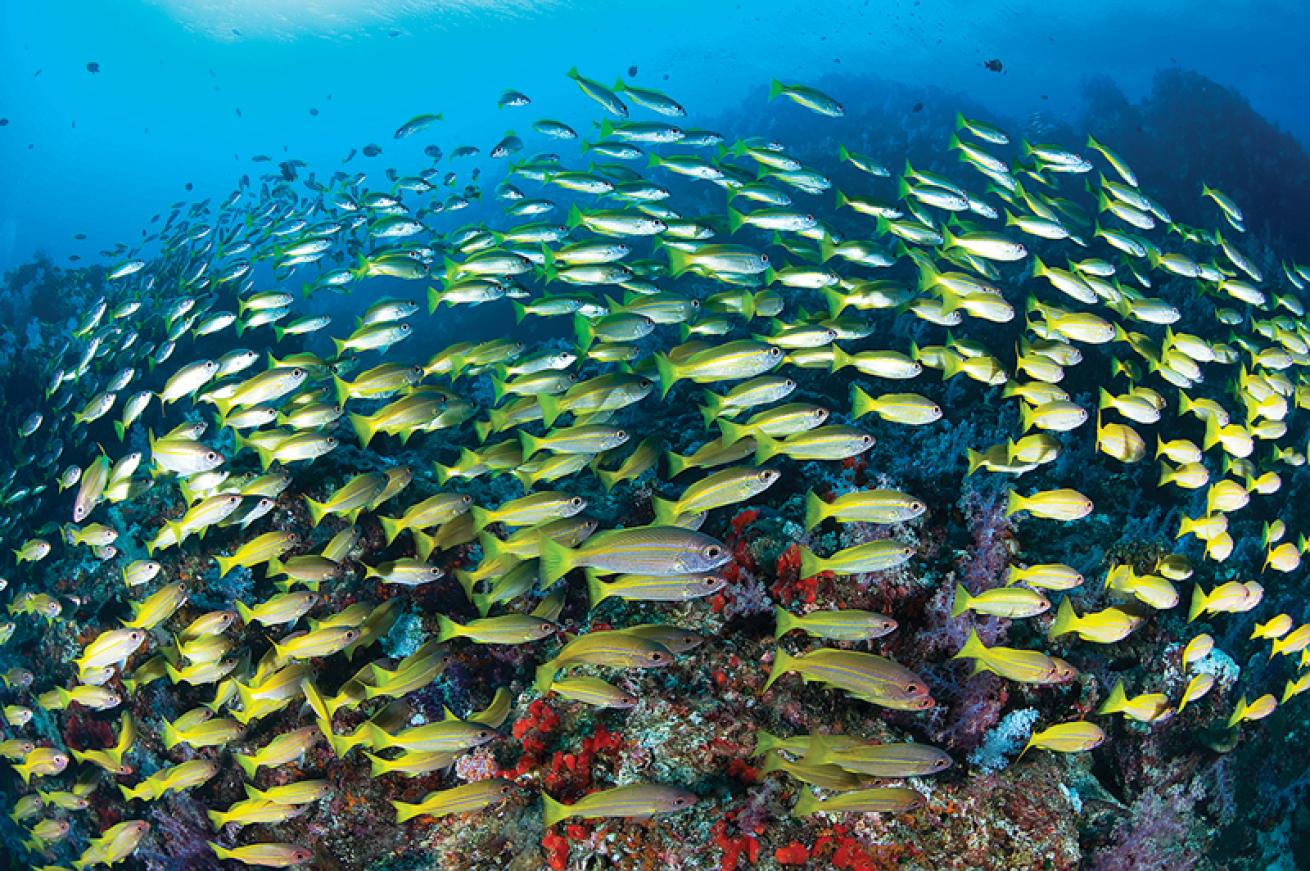
Stephen WongMobs of schooling snapper are a common sight while diving the Thailand Aggressor.
“When they get together they feed off each other,” says diver Mike Lamb, 51, of Douglasville, Georgia, who was making his 50th Aggressor trip since 1989, most of them Jim Church School cruises. “I still learn something from them every time.”
And what exactly does Thailand offer the underwater shooter? Diving that combines opportunities for macro and wide-angle, reefscape and muck, without ever moving the boat.
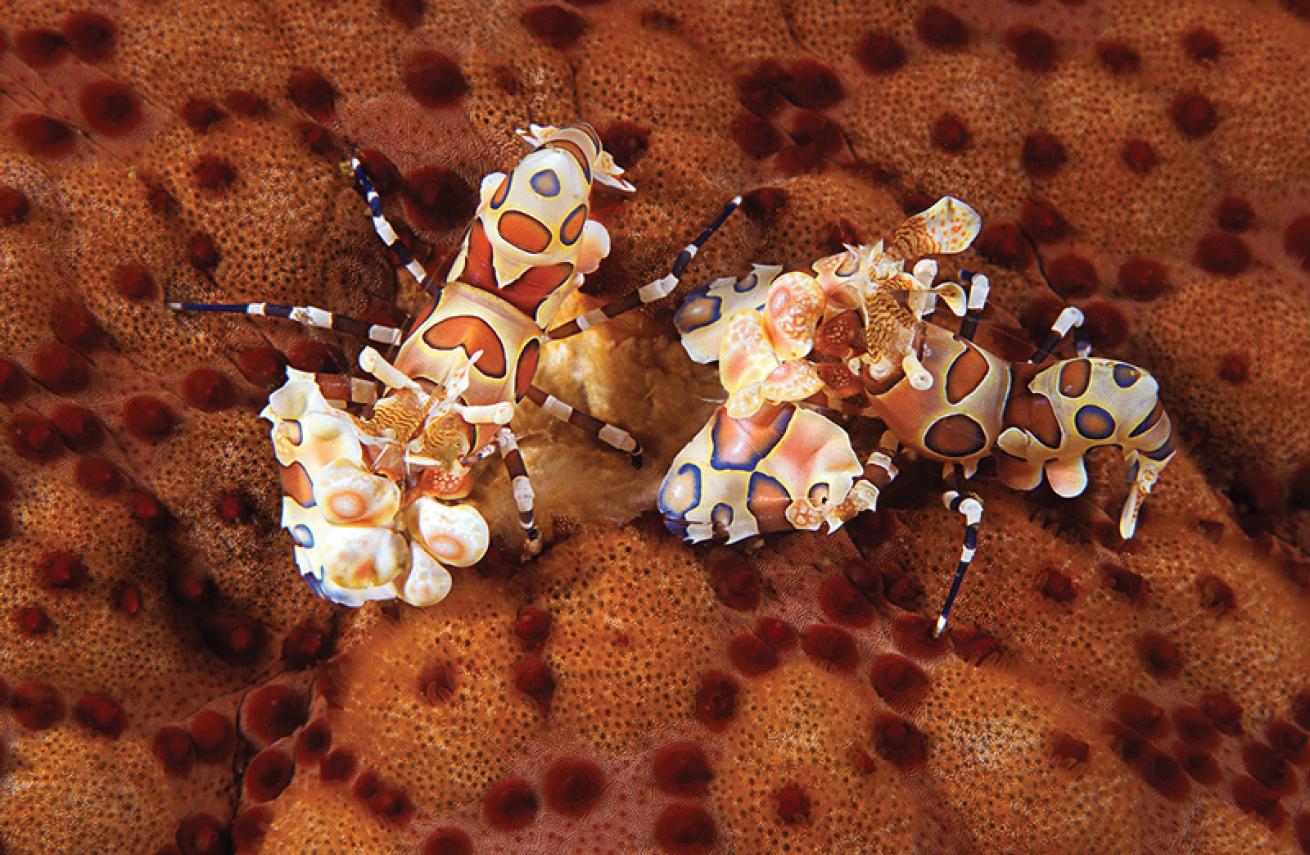
Brandon ColeHarlequin shrimp — usually found in pairs — are not an uncommon sight for divers aboard Thailand Aggressor.
The five islands of the Koh Haa group, south of the Phi Phi Islands, are a good example. Sheer, striated limestone walls balloon out from impossibly tiny bases, sloping inward to verdant tops, at low tide forming the classic “Thai island” look beloved of photographers and filmmakers. Below you’ll find granite structures, caverns and coral reefs, with sandy areas of excellent muck diving sprinkled between, all surrounded by a mind-boggling spread of soft corals.
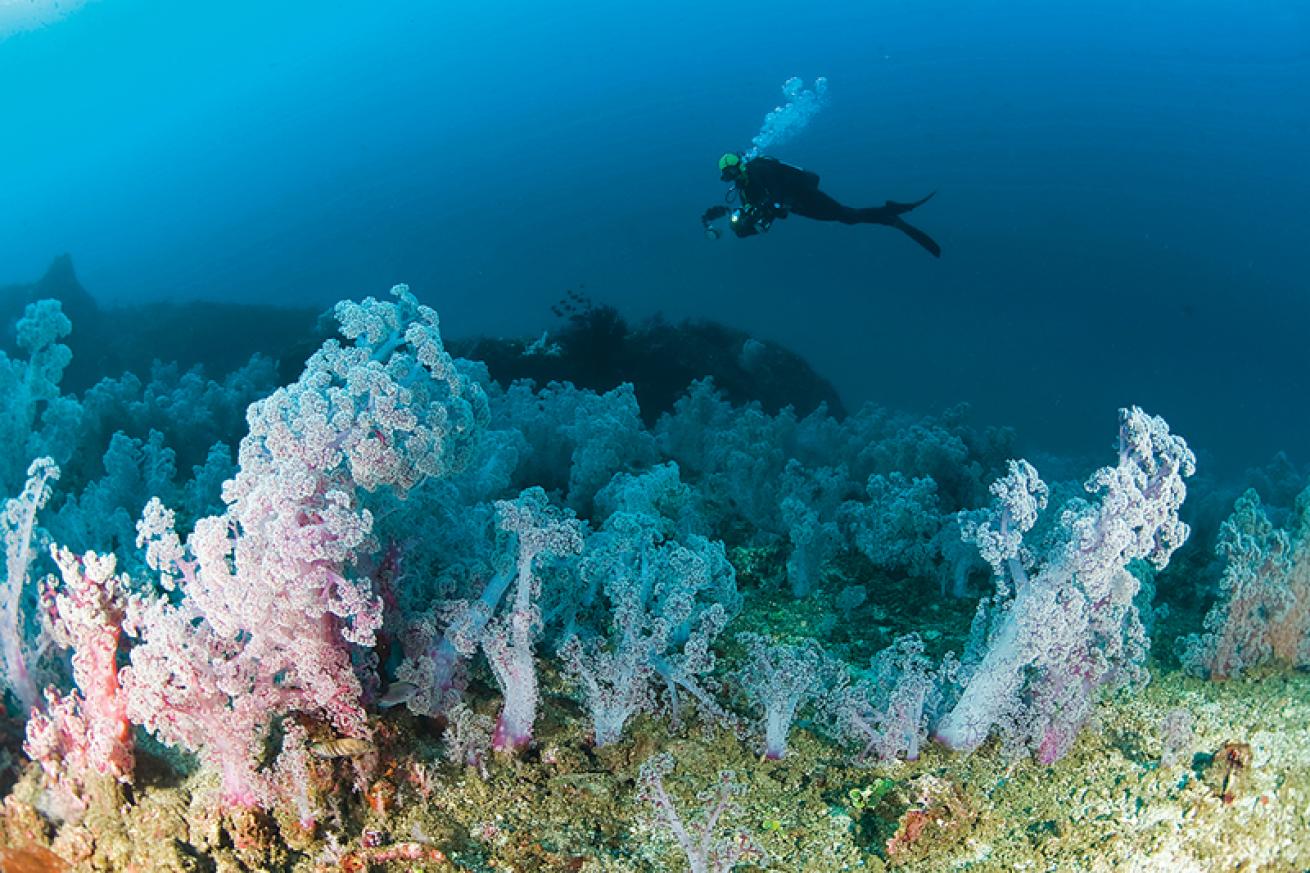
Stephen WongLavender Fields is a great dive site for soft corals. This gorgeous purple shade is a signature of southern Thailand.
At Koh Haa’s Lavender Fields, soft coral proliferates in hues from purple to lilac to white, mingled as far as the eye can see. Just above the fields lies a chimney that conceals a surprise cavern, thick with sweepers that didn’t spook. On the other side of the small island — many koh are easily circumnavigated on a dive or two — we flew high over terraces of plate corals; dropping down closer, they were bursting with fish, nudis and eels, eels and more eels. In between was a gorgeous mini wall covered in yellow, orange and lavender cup corals.
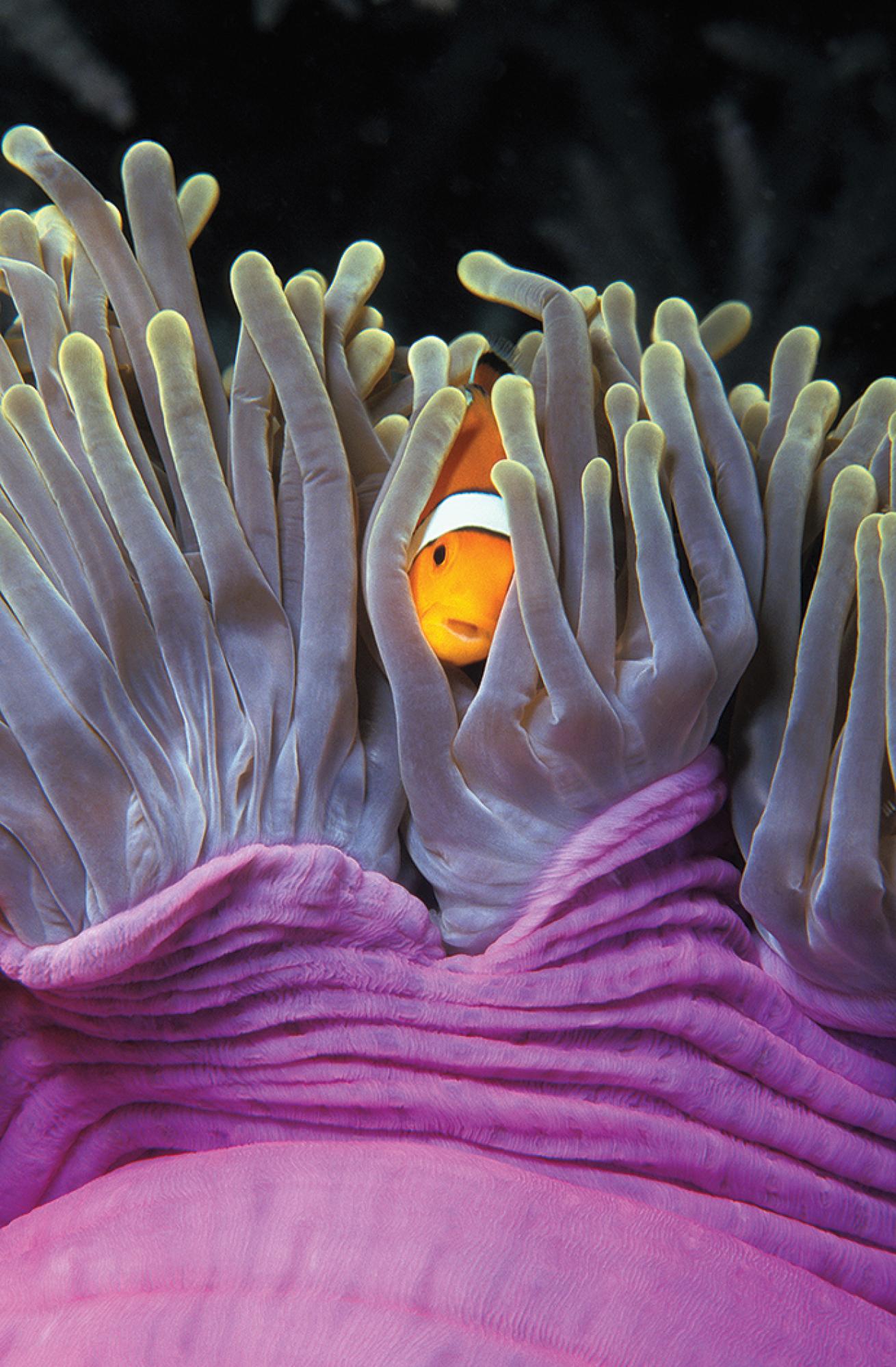
Brandon ColeThailand offers a fantastic array of anemones and their plucky residents, like this clownfish.
At Koh Haa Rock, crazy-patterned harlequin shrimp were devouring an unlucky sea star, the beginning of another super-fishy dive over an impressive granite landscape. On the sandy plains of nearby Koh Haa Lagoon, four or five hilariously feisty sea moths took turns charging me, clearly trying to chase me from the neighborhood. (Aggressive nesting titan triggerfish more persuasively tried the same at numerous sites.) Cuttlefish, sea kraits, shy peacock mantis shrimp, scorpionfish, huge schools of bait fish, a slender leaf cockatoo, blue-spotted stingray and the ever-present eels — all easy to spot in 60 to 80 feet of viz — rounded out a parade that’s typical of the region. That essentially Thai experience continues onboard.
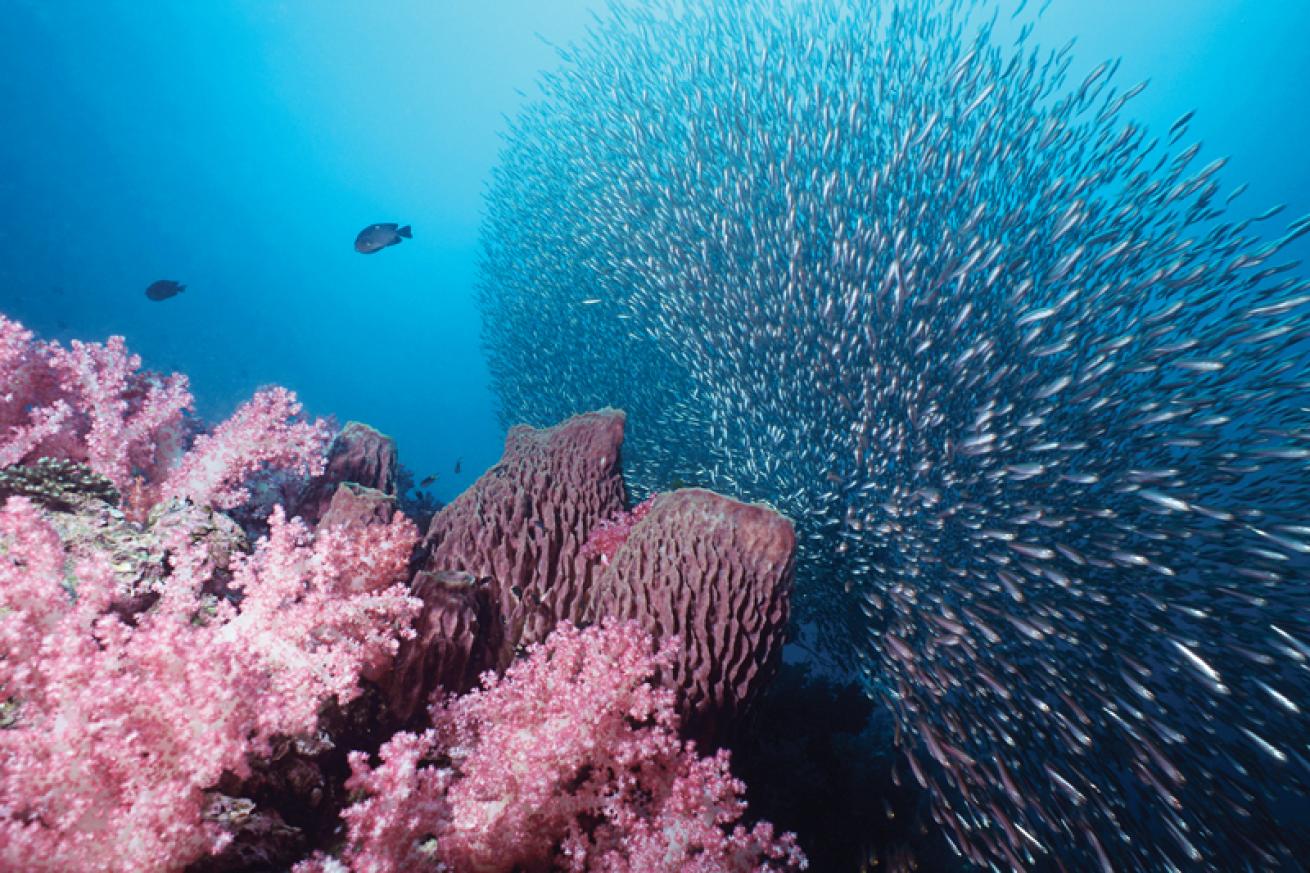
Doug PerrineShark Point, near Phuket, is known for schooling snapper and shy leopard sharks that hide on the bottom.
“You get a taste of the country on the boat — the food, the culture, meeting Thai people,” says Thailand Aggressor’s director, Lowel ORourke, 40. A bear of a man, ORourke is clearly looked up to by staff and crew — quite literally, to the merriment of guests and the mostly diminutive Thais.
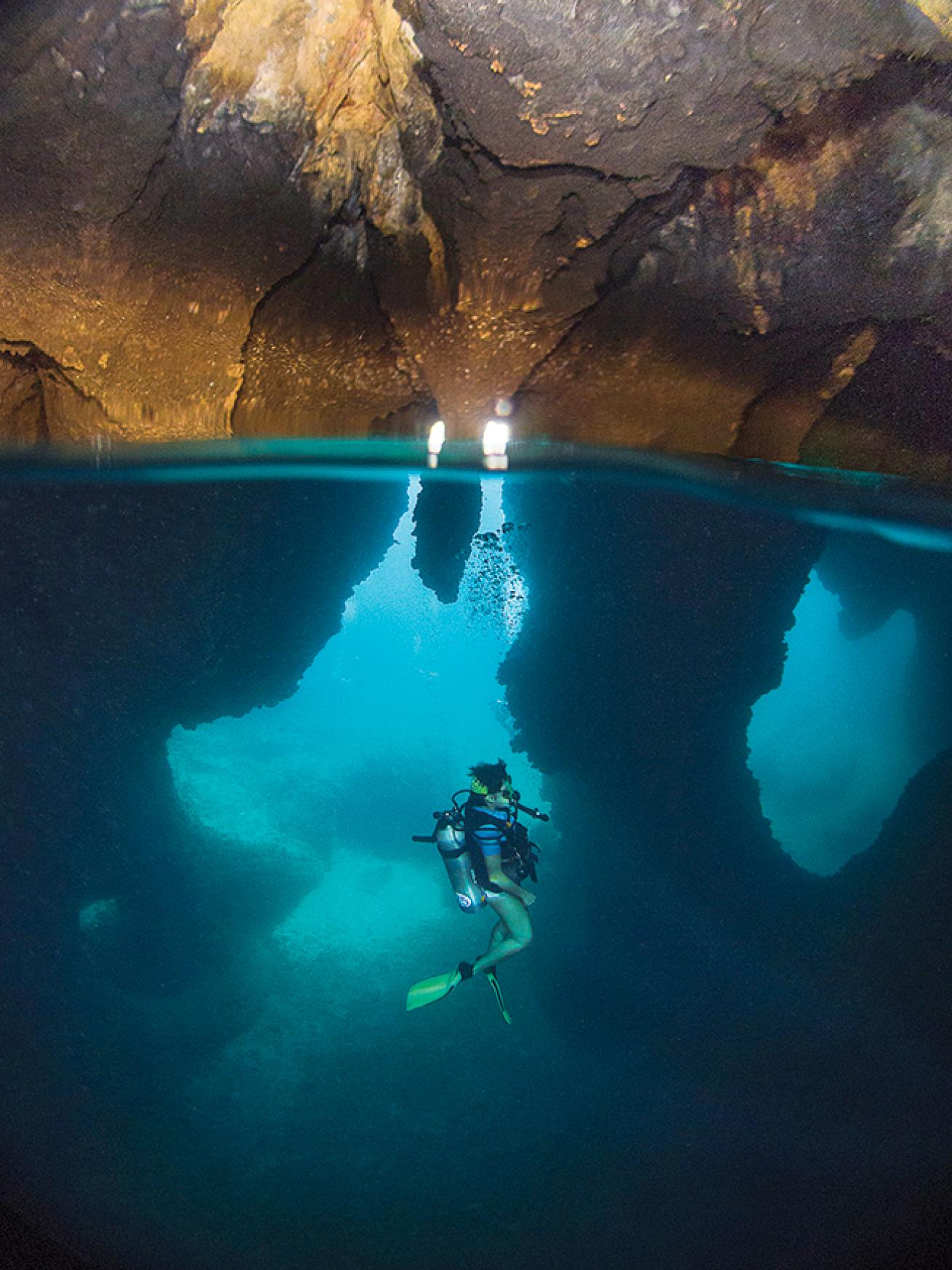
Lawrence Alex WuKoh Haa's Cathedral features a dramatic cavern that has three chambers — the first two are connected by a shallow swim-through.
Safe diving is observed, but if you wanna be in the water, you will be, all day and into the evening. Need a break? Two hammocks, a hot tub and numerous chaise lounges await you on the top-most deck, with views of tropical islands all around. Meals are sumptuous, lovingly presented, and more or less constant, if you count interval snacks that ranged from fresh-baked mocha, almond or shortbread cookies to Thai fish dumplings to pommello, quesadillas and ice cream bars. (When the still-warm churros rolled in cinnamon sugar showed up one gray morning, I knew I had found my boat.) Menus cater to Western guests — vegetarian? no prob — but always include Thai specialties that were among the best offerings.
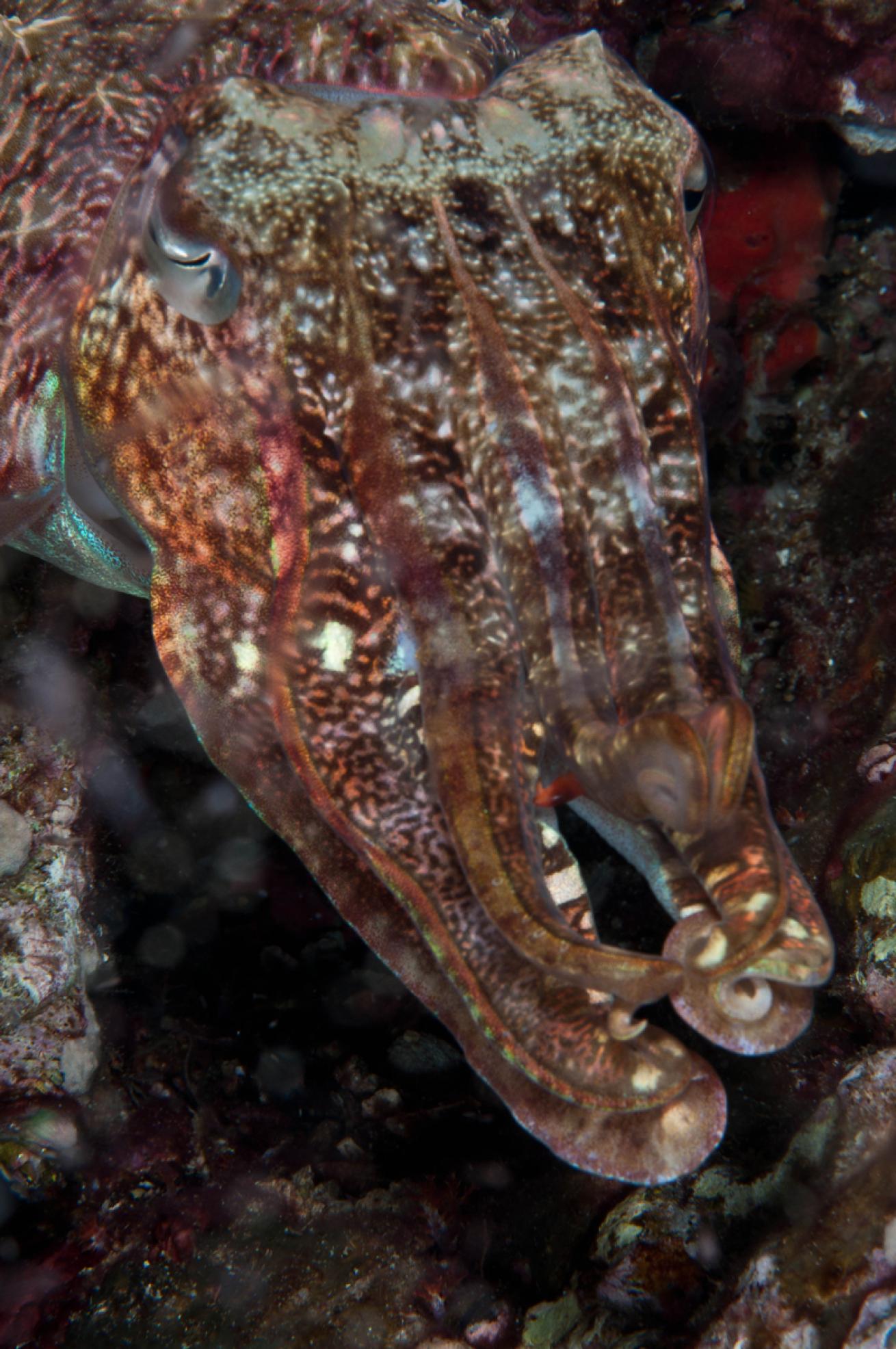
Lowel ORourkeCuttlefish are sometimes referred to as the "chameleons of the sea" because of their ability to rapidly alter their skin color at will.
“The consistency of the operation is remarkable,” says diver Tom Silverstein, 50, of Northbrook, Illinois, who was making his sixth Aggressor trip with the Jim Church School. “Running a four-star hotel would be considerably less effort” than what Aggressor and Dancer Fleet pulls off on every cruise, at 16 locations worldwide. Most importantly to Silverstein, “everybody has a passion for the diving — the captains, stewards, divemasters, they’re all excited about diving and photography.”
“If you’re a diver at heart, Aggressor is the way to do it,” says ORourke.
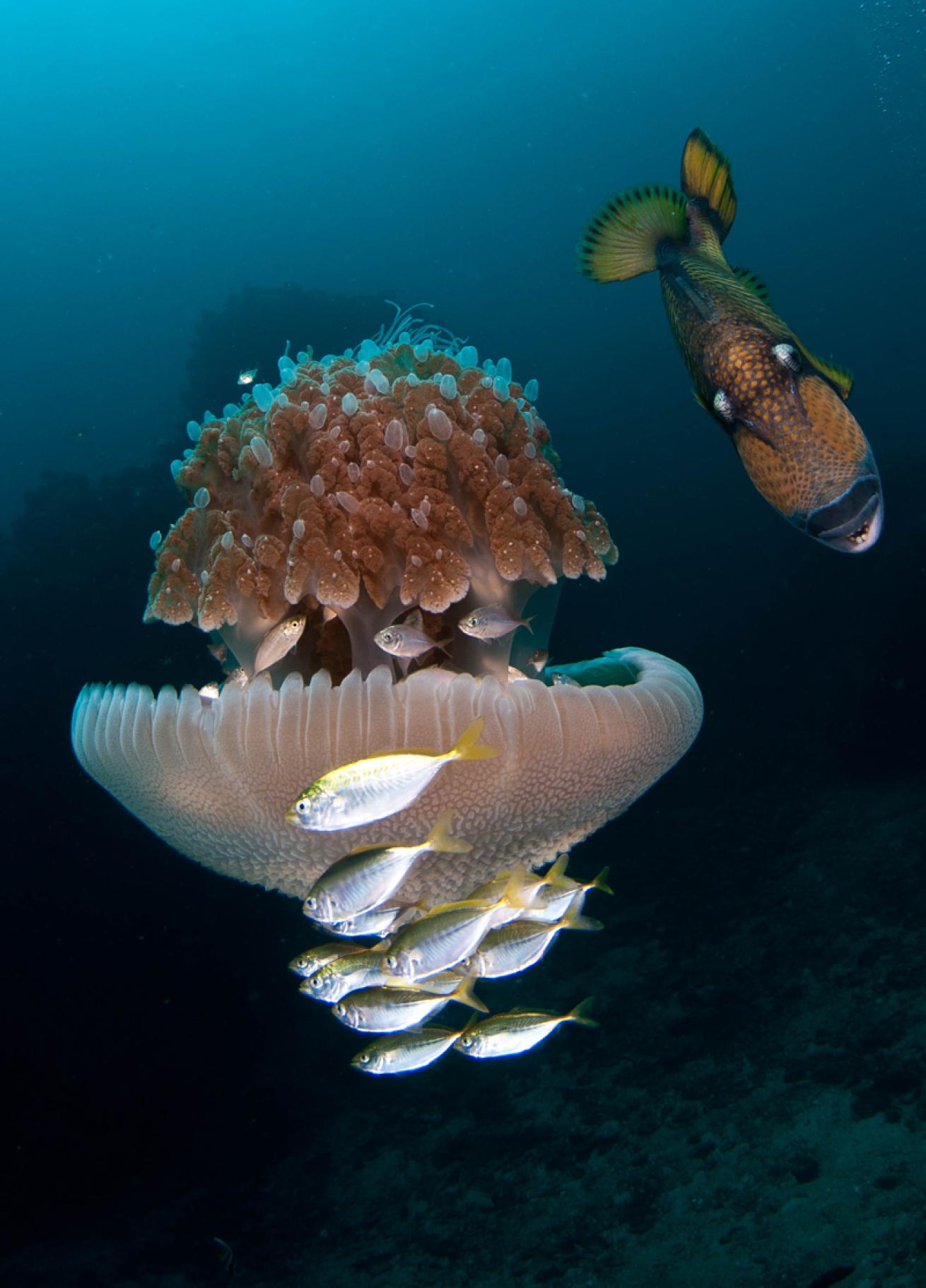
Lowel ORourkeA titan triggerfish charges — nesting females are highly territorial.
THAILAND DIVE GUIDE
Jim Church School accepts only certified divers, and there’s a reason for that, especially on the school’s Expedition charters, which are offered in more challenging locations. Although Thailand Aggressor is a super-comfortable boat — think of a beach house you love but don’t mind getting wet and sandy — this isn’t princess diving, and it isn’t baby diving. Dives aboard Thailand Aggressor are not technically guided, although staff is in the water on every dive, if only because they love it as much as you do. But you are neither expected nor required to stay with them.
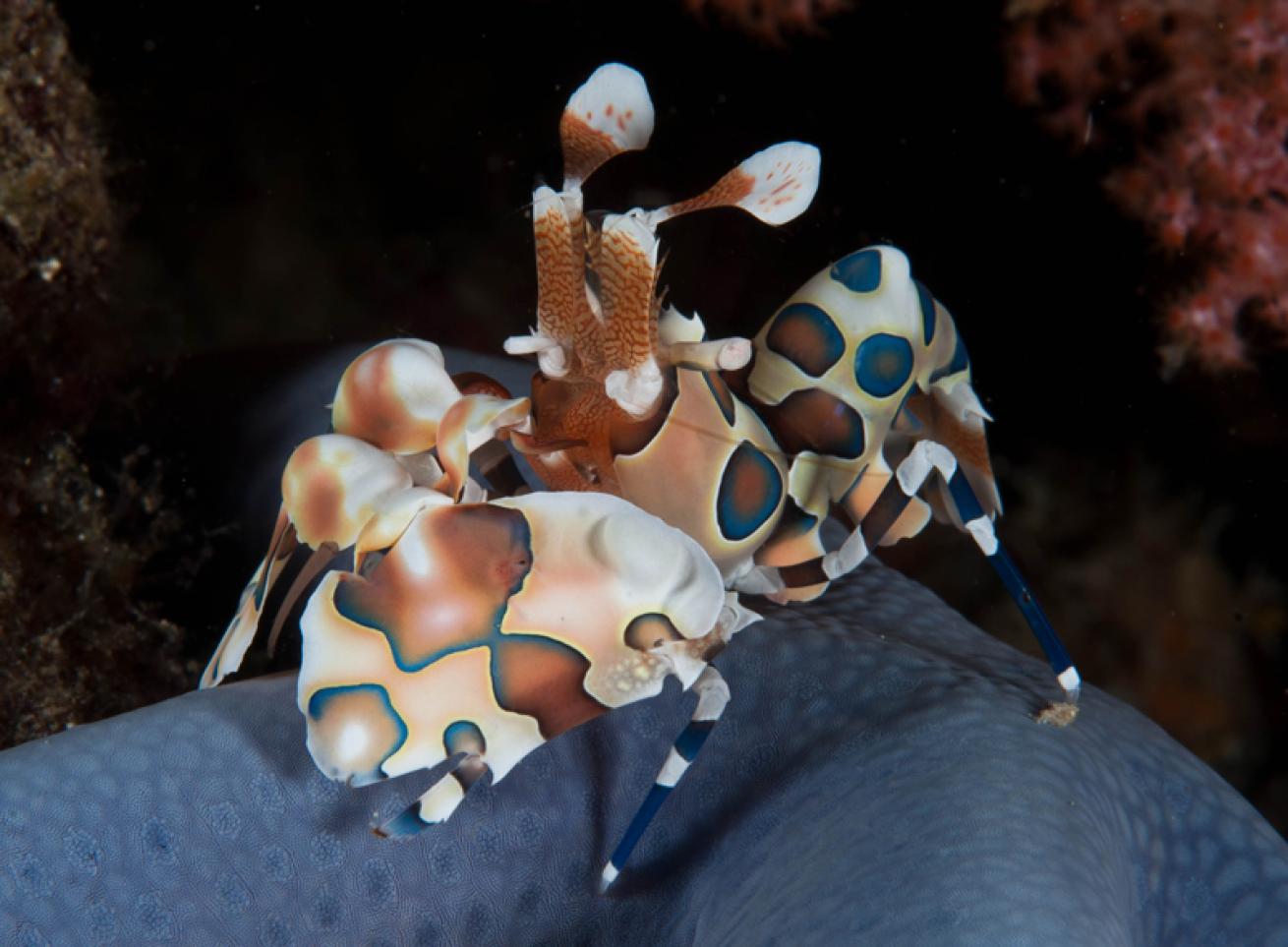
Lowel ORourkeHarlequin shrimp feed on starfish. They are skilled at flipping over the starfish and eating the tube feet and soft tissues before reaching the central disk.
If you prefer to dive with somebody from the ’hood, the dive staff will eagerly show you the best sites to make the picture you are trying to bag. “They know the sites, they know where everything is, they know the last time they saw a particular shrimp — that gets high points from me,” says diver Pierrette Wagner, 49, of Greenwich, Connecticut, who was making her 10th Aggressor trip since 2002.
On a Jim Church Aggressor cruise, the schedule is tailored to guests. “As long as it’s safe to do, they’ll do it,” Mesgleski says of itinerary changes. “Adding dives? No prob. Staying a day at one site? Not a sweat.”
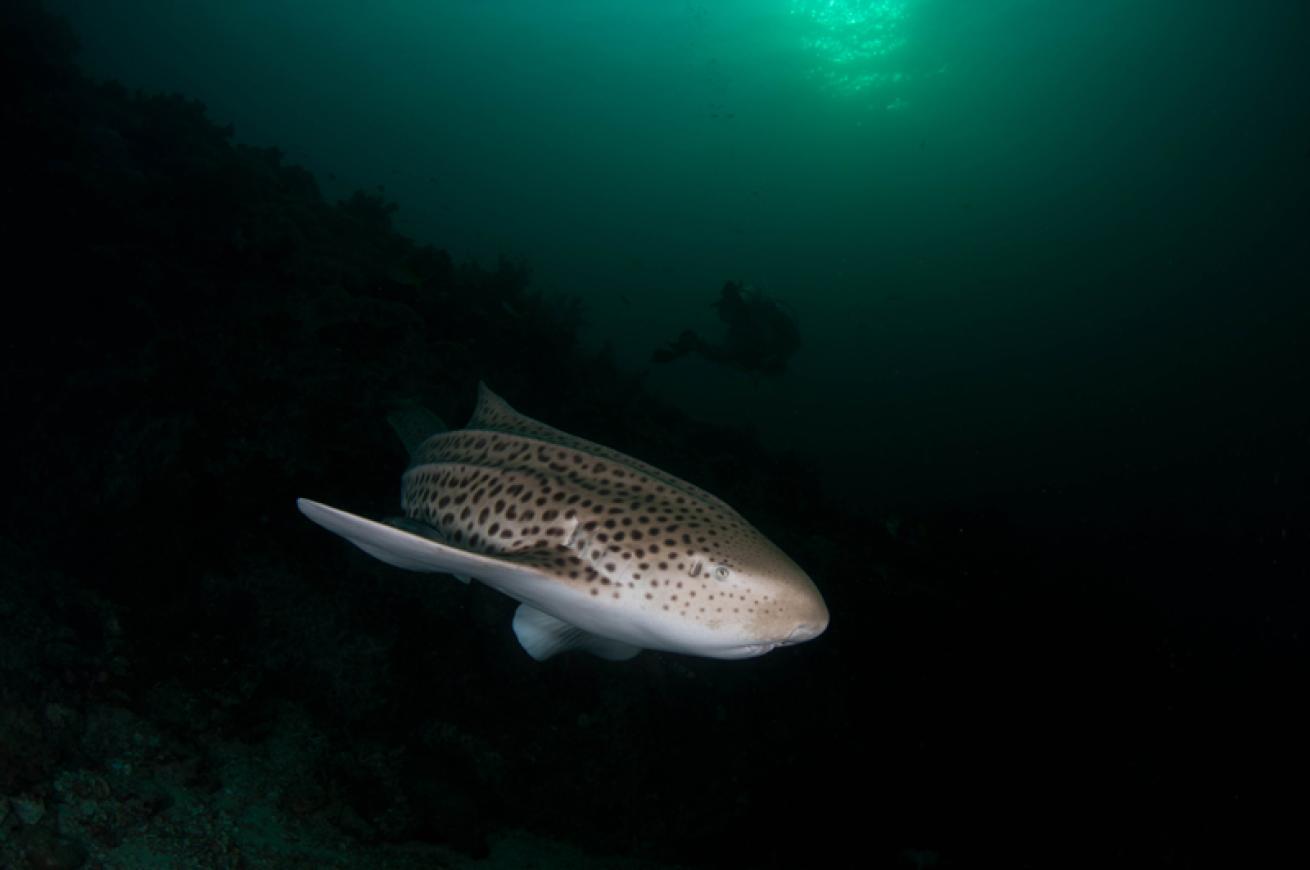
Lowel ORourkeZebra sharks are nocturnal and rest on the ocean floor during the day. Their diet consists of snails, crabs, small fish, shrimp and sea urchins.
Expedition diving is "more rigorous than in the Caribbean,” where the school offers more classroom-style instruction, Mesgleski says. Expeditions include more in-water and one-on-one time, and “more exotic locations for those who dive with us over and over.”
That guidance comes in handy in a place like Thailand, where the number of prize-winning shots you could make is off the charts. (I counted 70 different species for my logbook, 15 of them new to me.)
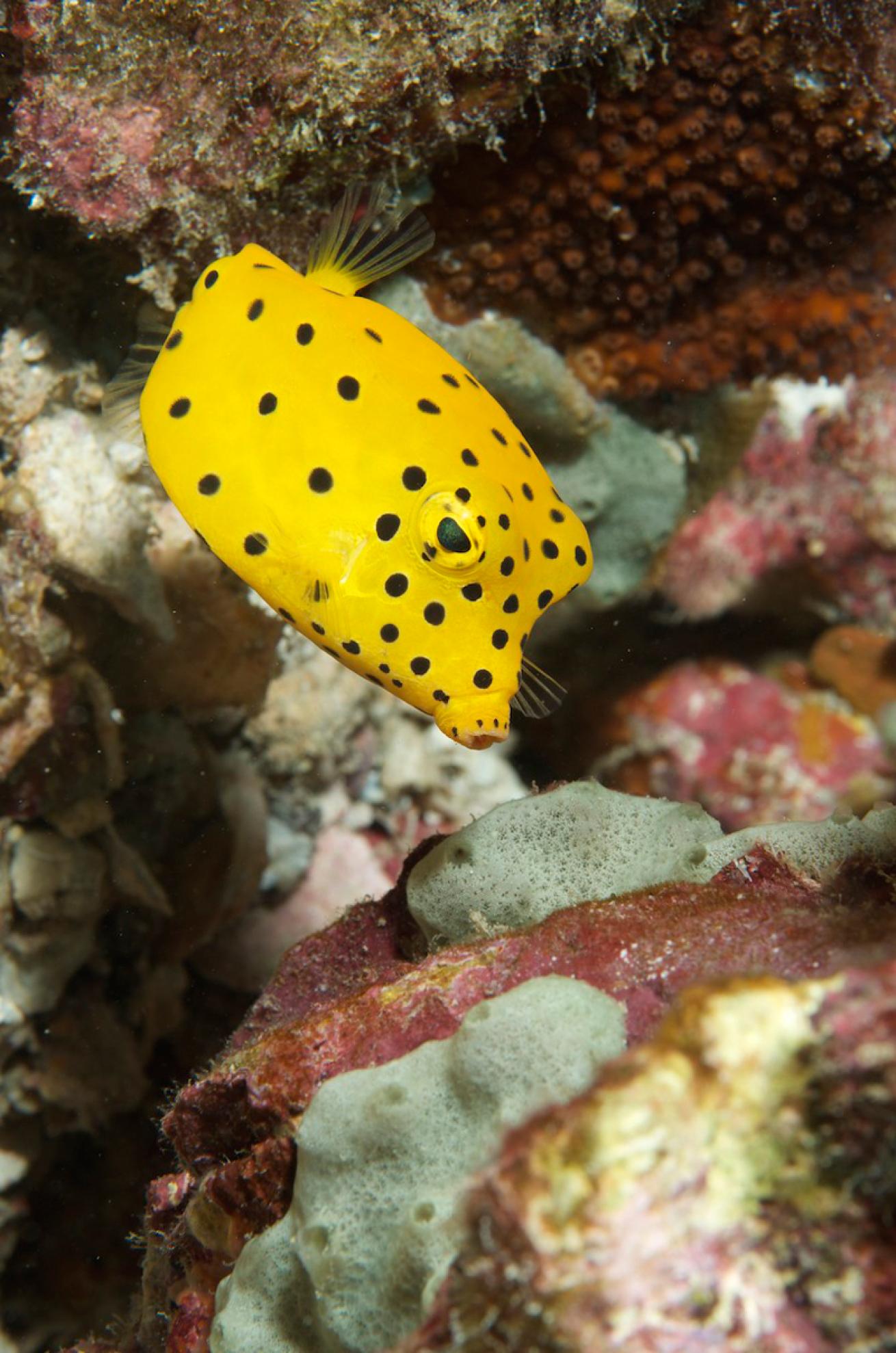
Courtesy Mike MesgleskiThe polka-dotted juvenile yellow boxfish reaches a maximum length of 18 inches. Juveniles are bright yellow in color, but the brightness fades as it ages. Old specimens will have blue-gray coloration with faded yellow.
At two spectacular open-water pinnacles, Hin Daeng and Hin Muang, seamounts support canyons and plateaus that create picturesque niches for eels, shrimp and other critters, while good-sized grouper and schooling barracuda hang just out of reach. If diving massive Hin Muang is like soaring over the Rockies, Hin Daeng is like flying up the Grand Canyon, complete with foaming whitewater breaking at the top instead of the bottom. On a night dive at Hin Daeng, free-swimming eels turn the slopes into a living, rippling mass.
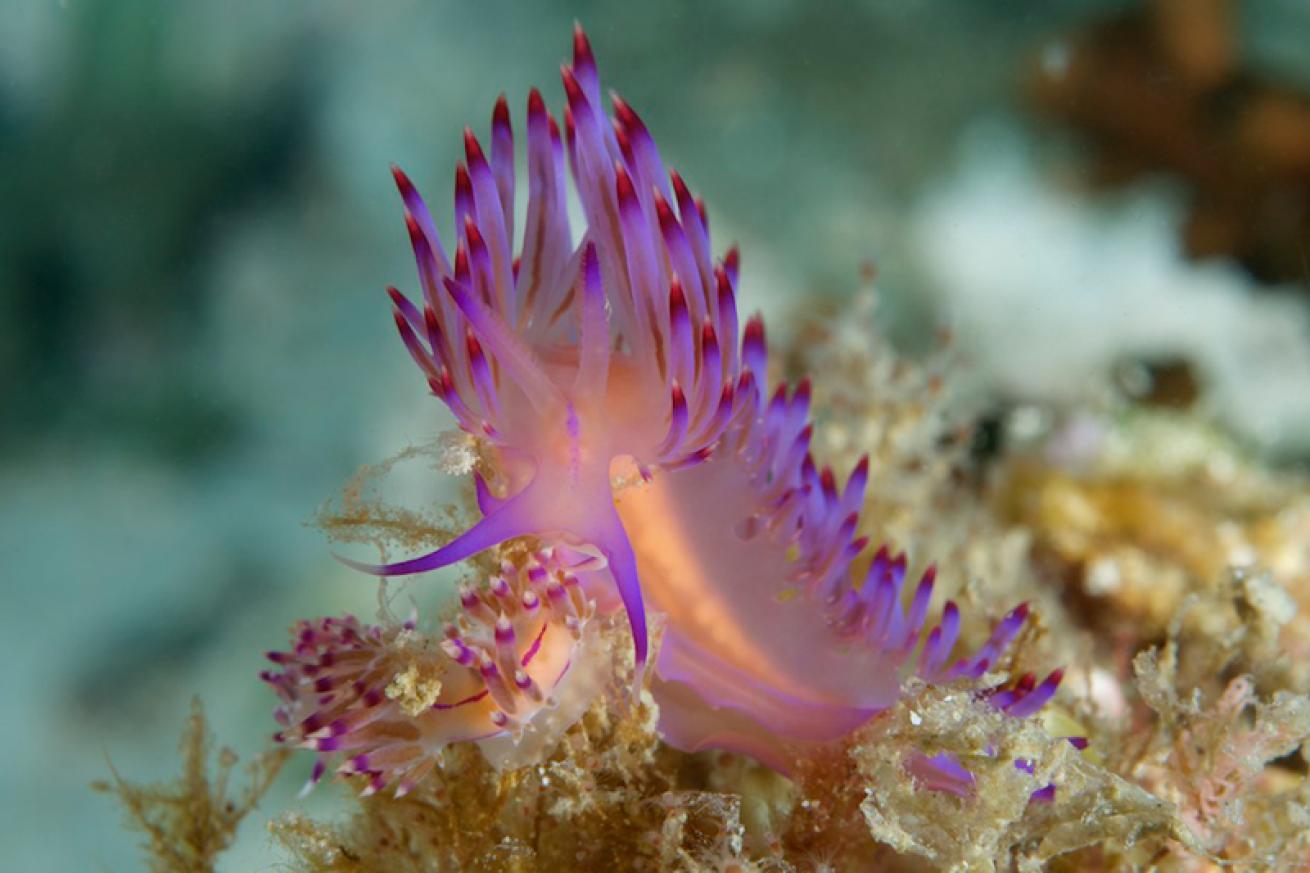
Courtesy Mike MesgleskiFlabellina nudibranchs are a common sight when diving Thailand.
Trippy, but for unforgettable there’s Stonehenge, off Koh Lipe, near the Malaysian border, one of the prettiest dives anywhere. Looking much like a tumble-down version of its namesake — if that landmark were covered in purple soft corals of every hue — the breathtaking site seems designed for photographers, who quickly honed in on seahorses, nudis and anemonefish — that is until the current came up and the viz went down, suddenly and substantially.
The next day we returned, and so did the sun: no current, super fishy, with schools of snapper, barracuda, jacks and batfish all around. A bait “ribbon” spooled all the way around the surface horizon, all shining in the sun.
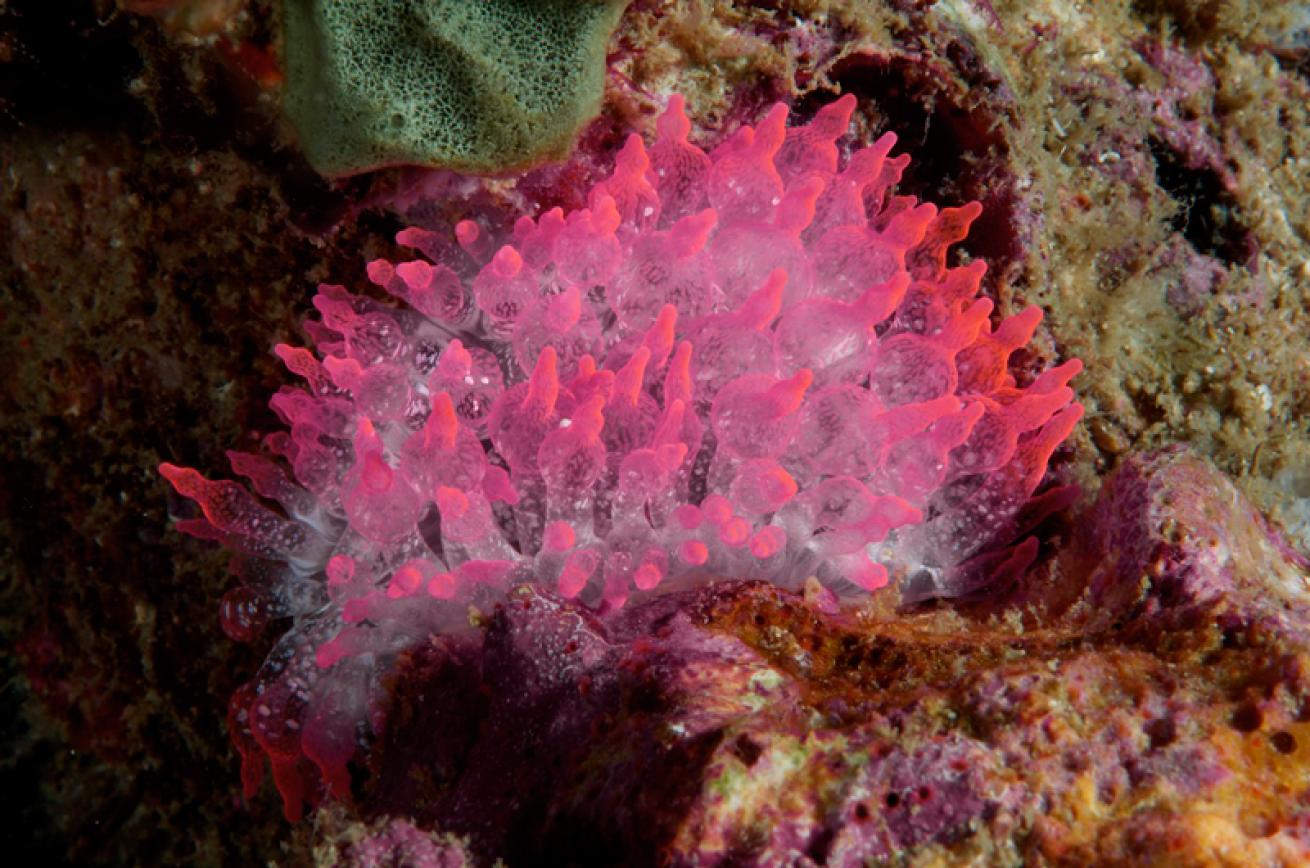
Courtesy Mike MesgleskiLarge, adult specimens of bubble-tip anemone are often found in deeper waters with more dimly lit conditions. Smaller, young specimens are often located in groups or colonies, in bright sunlight near the surface.
The photographers? Most went right back to the subjects they’d been working on the day before, with Mike Mesgleski moving between them, offering encouragement and a little help when needed.
The Mikes “can make any week on any Aggressor boat an enjoyable holiday that I can learn from in terms of photos,” says Lamb. “Wherever they go, I would follow.”
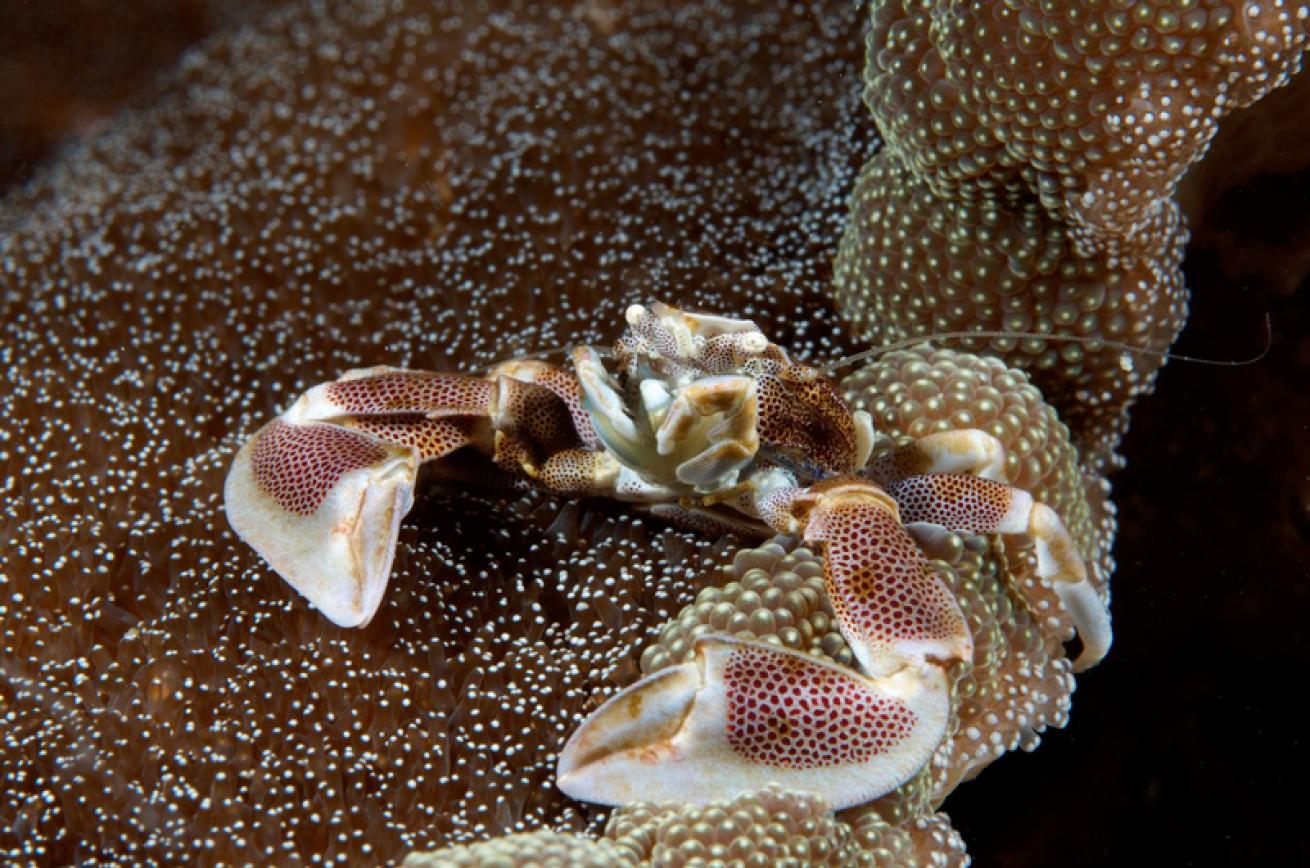
Courtesy Mike MesgleskiSpotted porcelain crab can be found on coral and rocky reefs.
FIVE REASONS TO DIVE THAILAND AGGRESSOR
Consistency. When you choose Aggressor and Dancer Fleet, you know what you’re getting: a top-notch, safety-first, dive-centric experience. Thailand Aggressor, while a newish itinerary for the fleet, fits right into this portfolio.
Local knowledge, local flavors. The dive staff is Thai, as is the crew, and delighted to share their knowledge of the region with you, above and below, including teaching you a few words of Thai. The Thai dishes included as options at nearly every meal are to die for, particularly the light, fresh soups.
Jim Church School of Underwater Photography. You’ve come a long way for this; why not make it a Jim Church Expedition and ensure that you’ll take home images you are proud of?
Safety. All the benefits of exotic dive travel on a vessel you can be sure is maintained to U.S. Coast Guard standards.
Joining a club for life. Don’t be surprised if your fellow Aggressor travelers are among your greatest delights — something you can’t say of every group tour with strangers. You’ll leave hoping — or planning — to dive again with friends you make here.
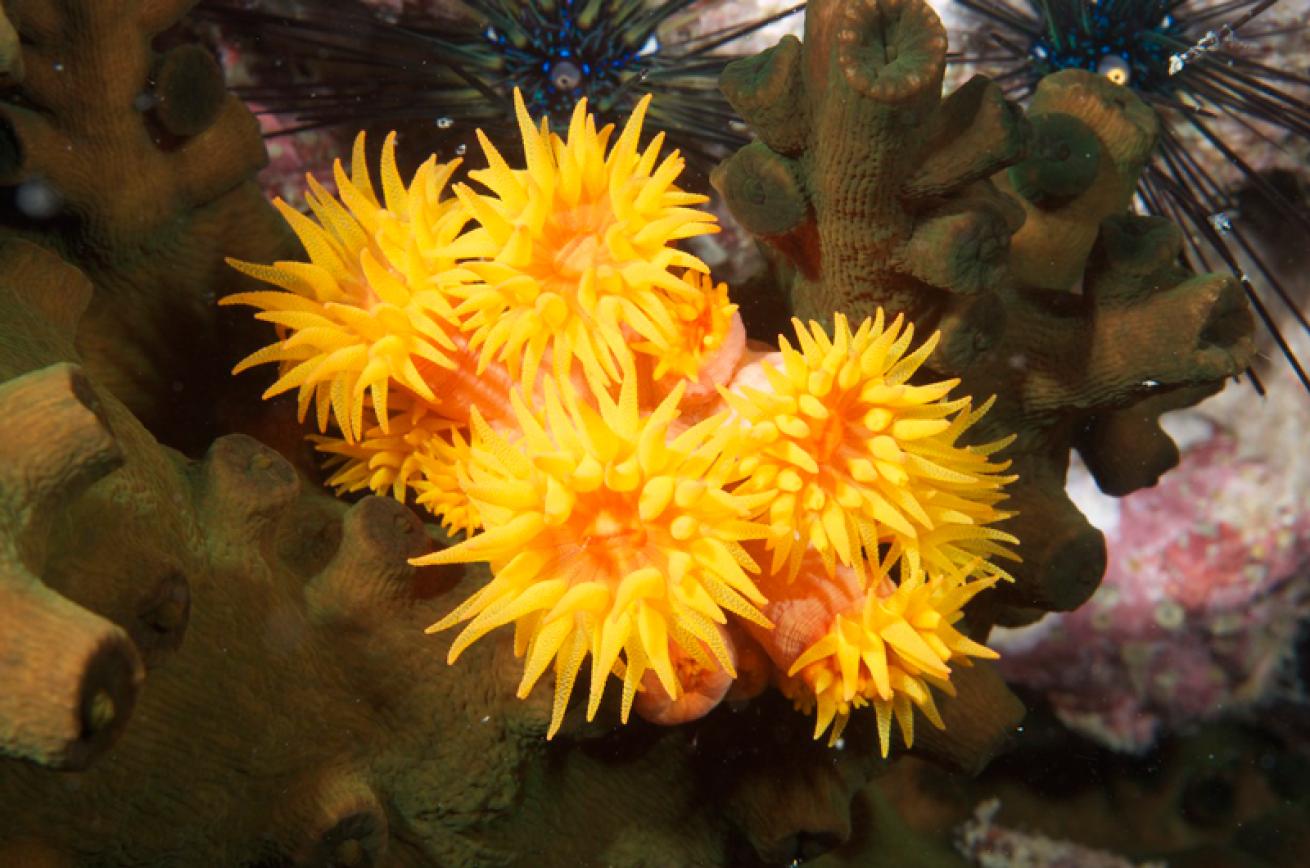
Courtesy Mike Mesgleski
Tubastrea, also known as sun polyps, belong to a group of corals known as large-polyp stony corals. While they produce a hard skeleton, they do not build reefs. As flowery as they look, these are animals.
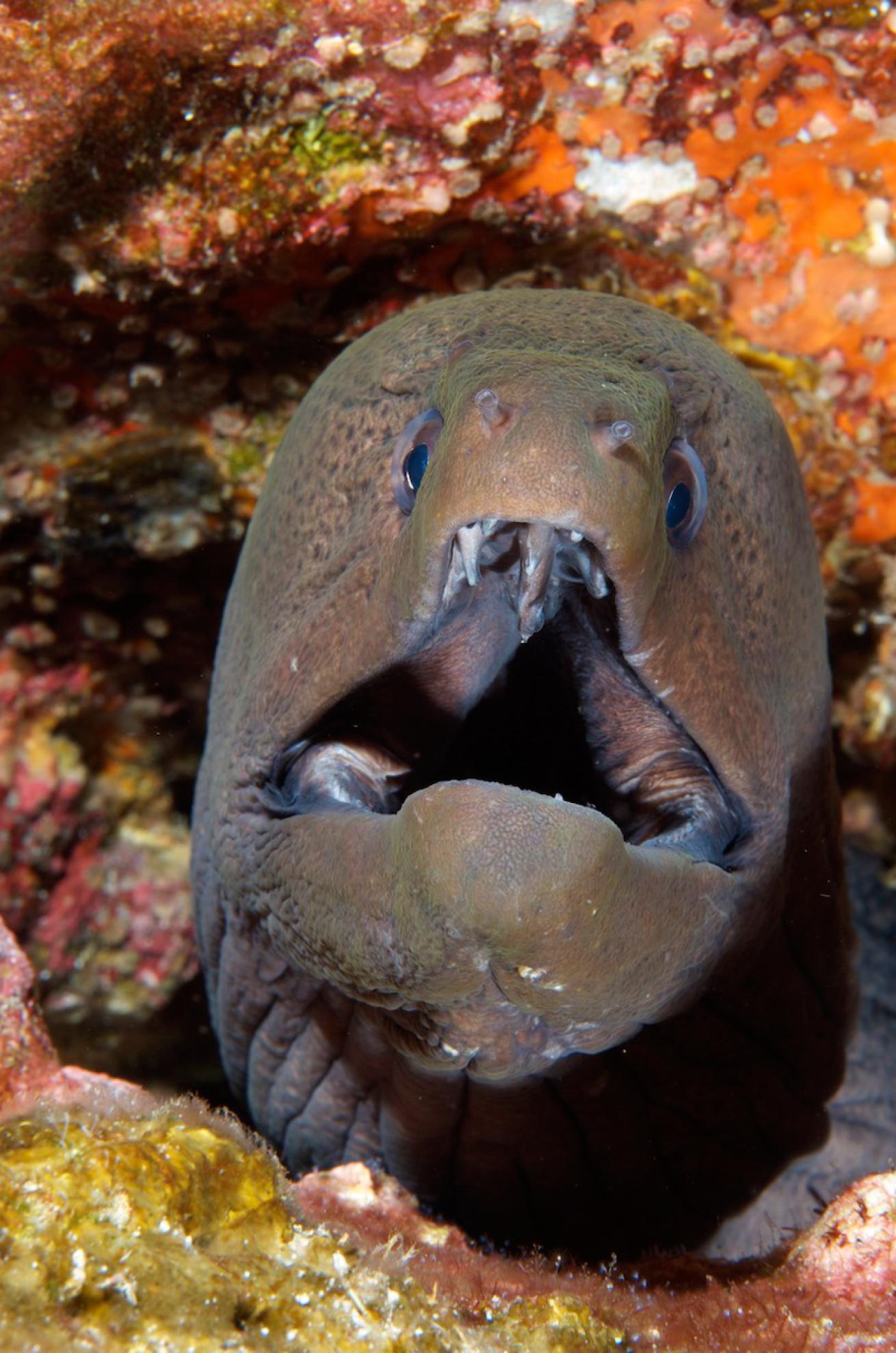
Courtesy Mike MesgleskiGiant moray eels are the largest species of moray eel, feeding mostly on fish and crustaceans.
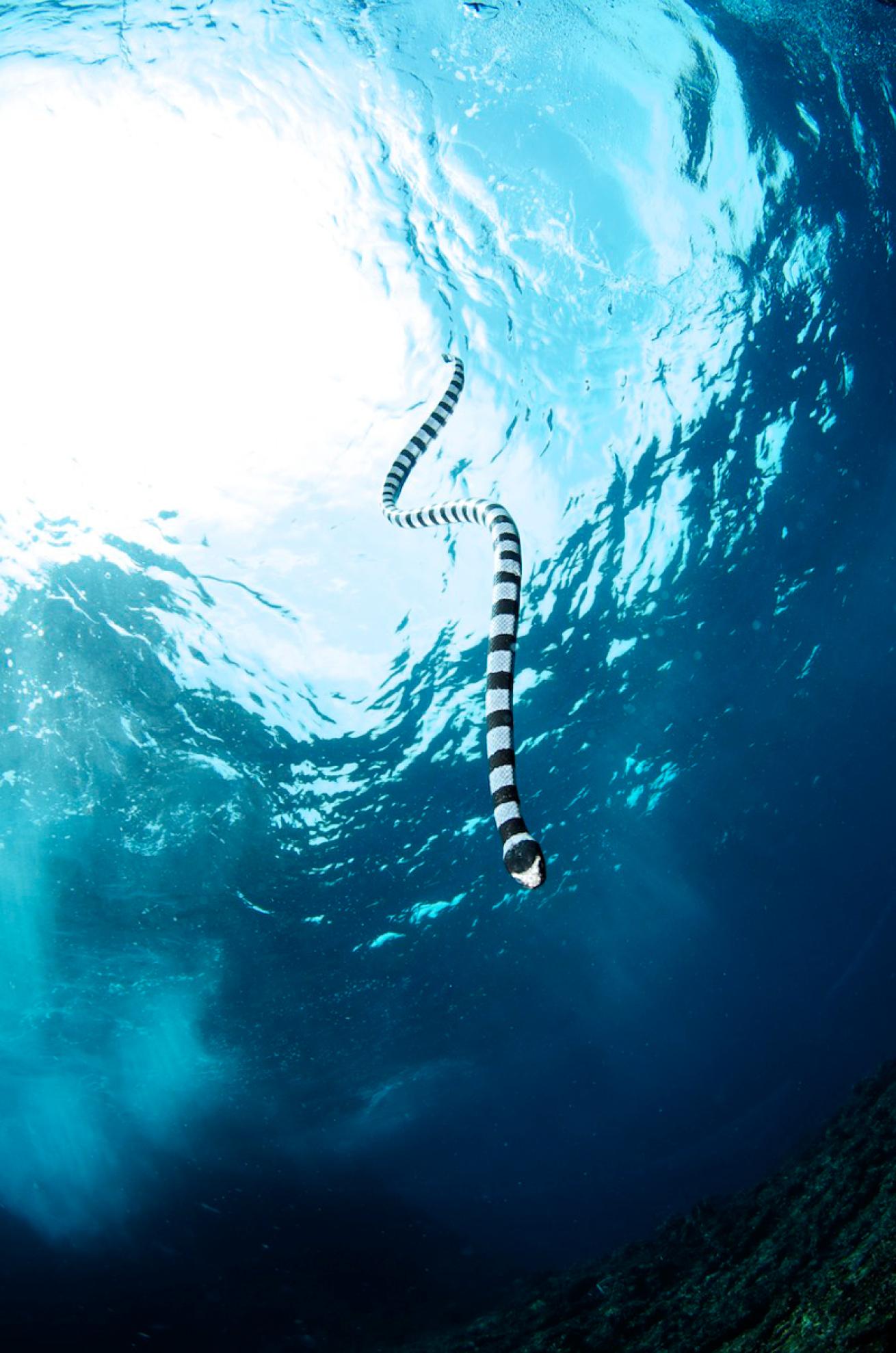
Courtesy Mike Mesgleski
Banded sea kraits use their small heads to probe cracks, crevices, and small openings in the coral matrix in order to forage for eels. Sea kraits have venomous fangs. Their venom contains powerful neurotoxins that affect the muscles of the diaphragm of its prey.
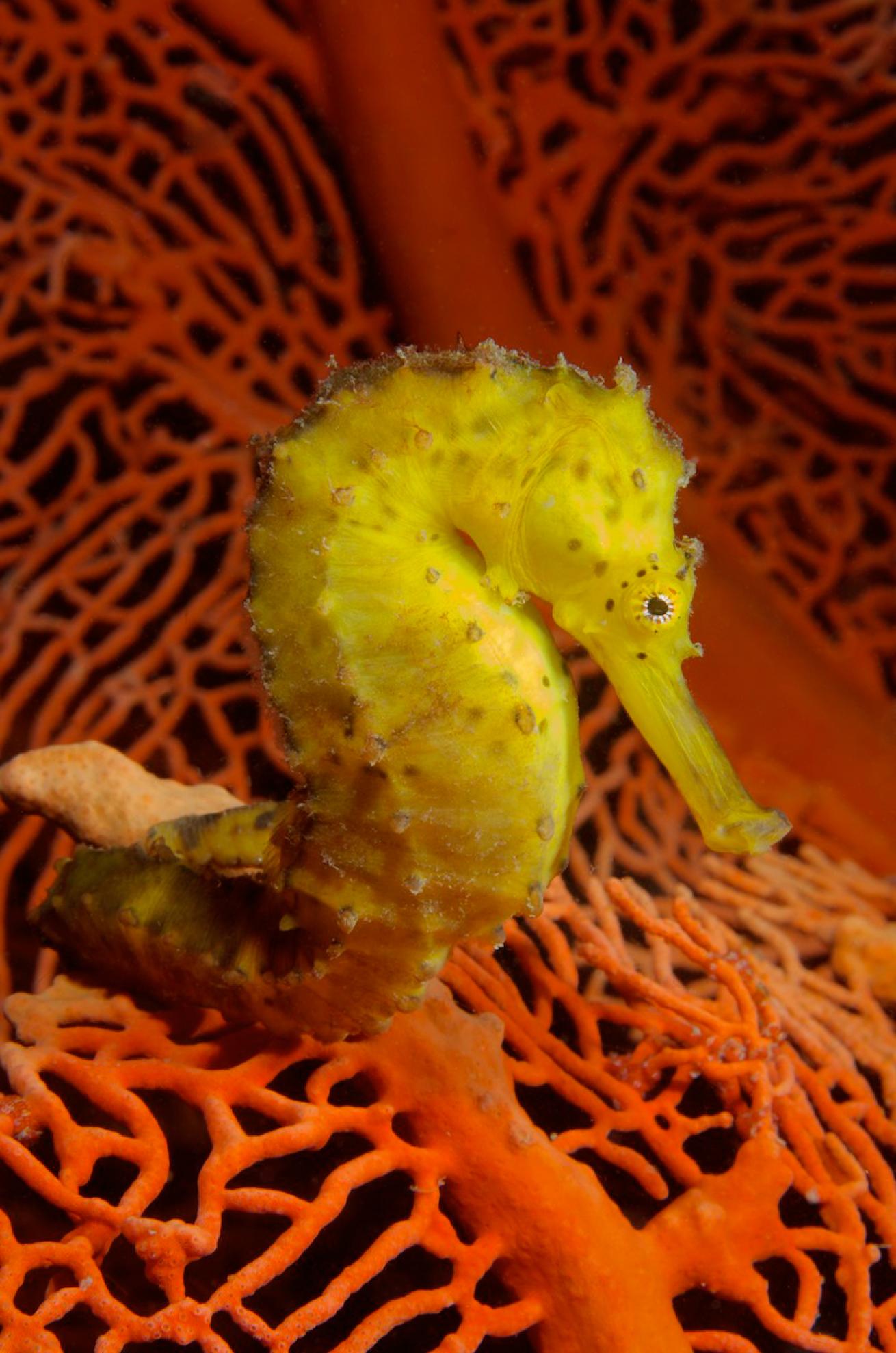
Courtesy Mike MesgleskiSeahorses are a common sight when diving from the Thailand Aggressor.
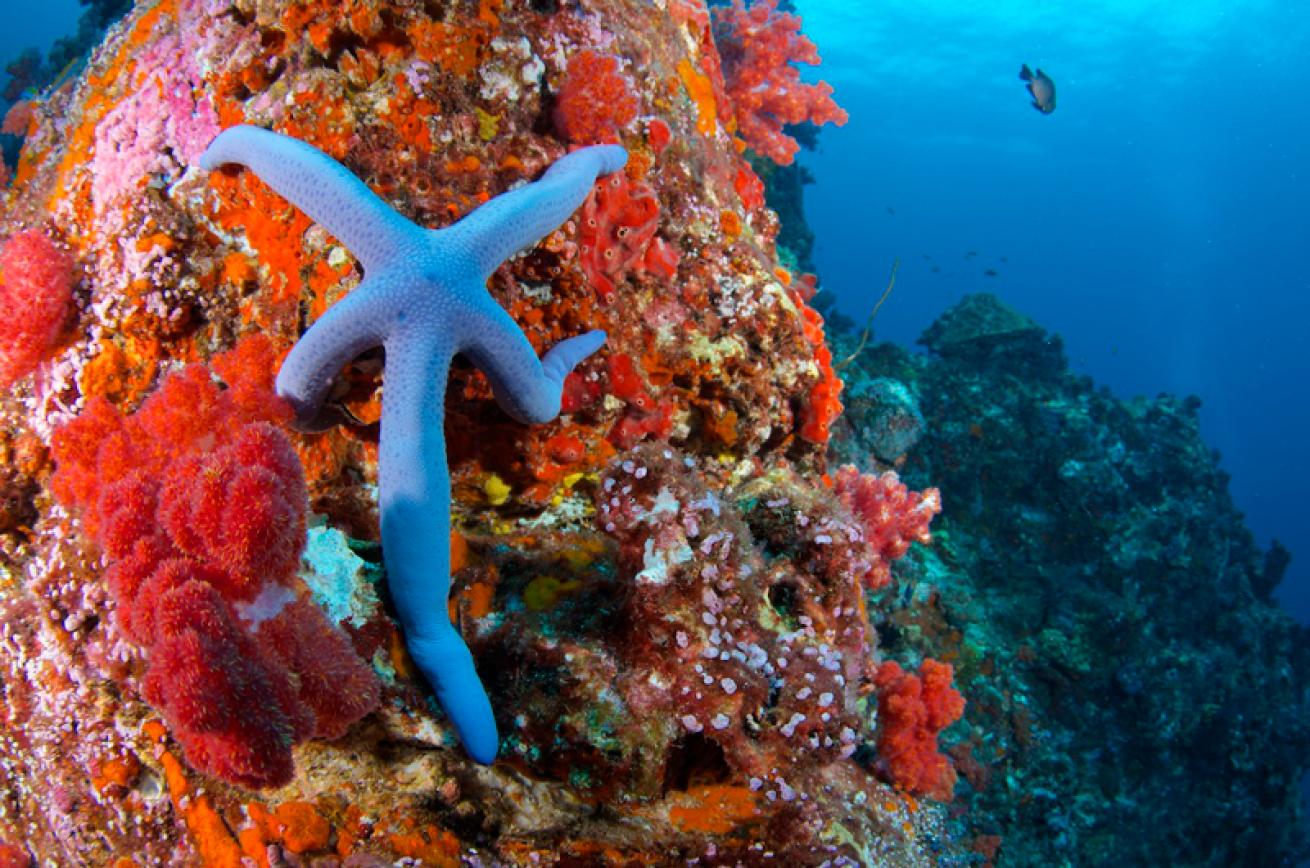
Courtesy Mike Mesgleski
The Linckia laevigata is a species of sea star that is commonly found in shallow Indo-Pacific waters. Various pufferfishes, triton shells, harlequin shrimp and sea anemones have been observed to eat whole or parts of the sea stars.
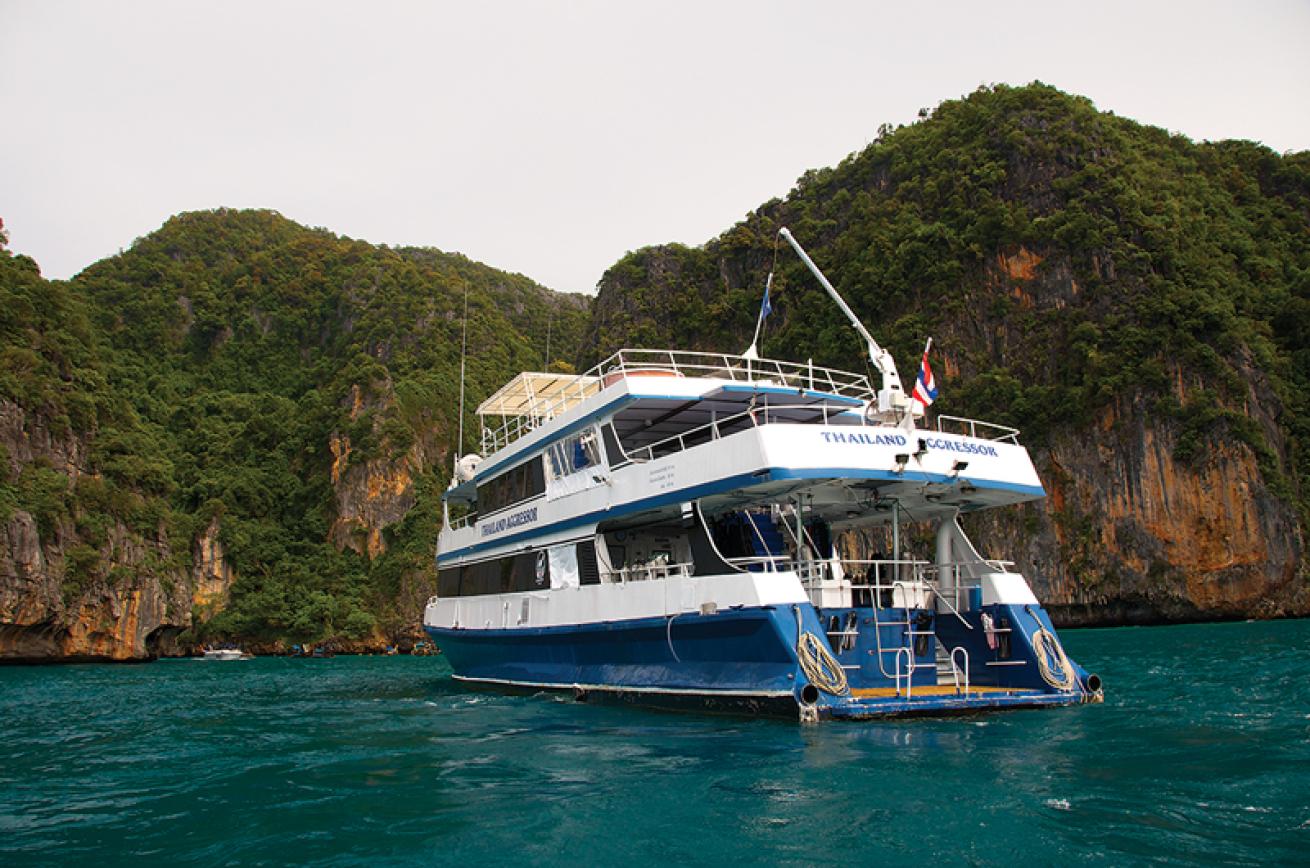
Courtesy Mike MesgleskiOnly certified divers are accepted at Jim Church School — dives aboard Thailand Aggressor aren't technically guided.
NEED TO KNOW
When to Go
Thailand Aggressor offers multiple itineraries: May to October, the boat is in the South Andaman Sea, including the Phi Phi Islands, Koh Haa and the Tarutao National Park near the Malaysia border; November to April, the boat alternates between the southern route and North Andaman, including the Similan and Surin islands. (Starting in November 2014, the schedule will include itineraries to Myanmar — formerly Burma — known for pristine, untouched dive sites.)
Dive Conditions
Water temps range from 79 to 84 degrees F. A 3 mm wetsuit is sufficient (up to five dives a day are the norm; bring layers if you get chilled). Currents are generally mild to nonexistent, but conditions are changeable in the monsoon months (May to October). An SMB is required (the boat can loan); other surface-signaling devices, a muck stick and gloves are a plus.
Operator
Thailand Aggressor (aggressor.com) is a 115-foot steel-hull vessel that carries up to 18 passengers in nine staterooms, plus nine staff and crew. The ship has a spacious, comfortable dive deck with a large dedicated camera area with multiple power outlets; diving is from the back of the vessel as well as from two rigid inflatables. Contact: [email protected].
Price Tag
A six-day cruise aboard Thailand Aggressor starts at $2,580 (per person, double occupancy); nitrox and a $90 park fee are not included. (Bonus: Aggressor Fleet’s in-house travel agency can arrange land tours to include a few days in Bangkok, which is well worth a visit.










